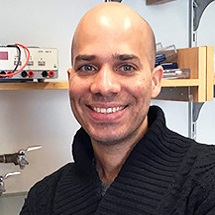Eliezer Calo, Ph.D.
Assistant Professor of Biology
Massachusetts Institute of Technology

Assistant Professor of Biology
Massachusetts Institute of Technology
Key Words: Craniofacial Anomalies, Congenital Disorders, Treacher Collins Syndrome, Neural Crest Cells, Phenotypic Variation, DNA Damage
Due to its anatomical complexity, the head is highly prone to genetic and environmental insults. Although 1% of newborns exhibit developmental deformities, one-third of these include craniofacial abnormalities. Over 700 distinct craniofacial syndromes exist so far, but the underlying causes for most remains unknown. Craniofacial anomalies exhibit significant variation in penetrance and severity of the phenotype to the extent that it is challenging to predict who will present with a particular craniofacial condition even when carrying an identified causative mutation. This greatly precludes our ability to understand the cause and devise treatment strategies for these devastating childhood disorders. Although genetic and environmental factors are known to contribute to phenotypic variation, at the molecular level, we do not fully understand how, where and when phenotypic variation arises and why is so pervasive in these disorders. My goal is to elucidate molecular mechanisms leading to phenotypic variation in craniofacial disorders. I will focus on Treacher Collins syndrome (TCS), one of the most severe and phenotypically variable disorders of craniofacial development. TCS is caused by heterozygous mutations in the RNA polymerase I (Pol I) cofactor TCOF1 or subunits POLR1D and POLR1C. I have successfully developed models of TCS in zebrafish that faithfully recapitulate the human disease. I have also generated a cellular model of TCS by introducing patient mutations into human embryonic stem cells using CRISPR-Cas9. I will leverage these models to elucidate mechanism downstream of TCS-mutations leading to phenotypic variability. This study will provide novel insights into phenotypic variation and the etiology of craniofacial malformations.